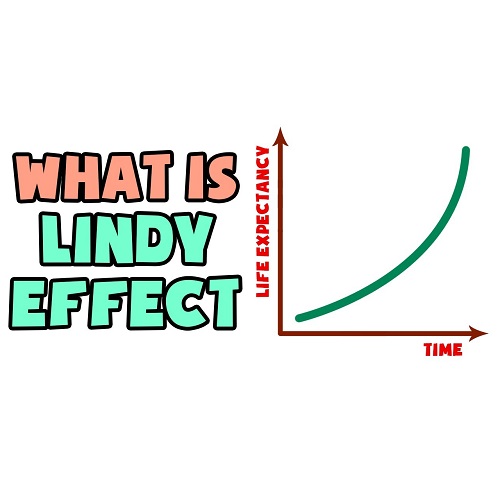
The Lindy Effect
*
The Lindy effect is a phenomenon by which the future life expectancy of some non-perishable things, like a technology or an idea, is proportional to their current age. The Lindy effect proposes the longer period something has survived to exist or be used in the present, it is also likely to have a longer remaining life expectancy. Longevity implies a resistance to change, obsolescence, or competition and greater odds of continued existence into the future. Where the Lindy effect applies, the mortality rate decreases with time. Mathematically, the Lindy effect corresponds to lifetimes following Pareto probability distribution.
The famous author Nassim Nicholas Taleb offers a counter-intuitive rule-of-thumb for answering questions like this. If you want to know how long something non-perishable will endure – that is, something not subject to the limits of a natural lifespan – then the first question you should ask is how long it has already existed. The older it is, the more likely it is to go on surviving. He provides a really interesting way to try to forecast the future by not adding new technologies to it but removing existing ones.
Precious metals are used as money since the dawn of time. Used as trading devices, and units of measure, coins emerged in Mediterranean societies in the 6th Century BC. The Lydians, located in modern Turkey are credited as having produced the first stamped coins in 650 BC, and experts suggest that contemporary Ionians and Greeks used similar types of coins. The Babylonians are credited as having developed the precursor to the modern-day economic system. The Ancient text, The Code of Hammurabi (17th century BC) standardized the currency system.
On one hand, we can expect the real money to be with us for quite some time. On the other hand, the US Dollar was removed from the Gold Standard just before 50 years. Modern-day technologies posing as money are even younger. Only time will tell but we guess precious metals are here to stay for quite some time.
LEGAL DISCLAIMER:
While the author has made every effort to provide accurate data and information in the preparation of this article, neither europabullion.com nor the author assumes any responsibility for errors or for changes that occur after the publication. The information referenced is believed to be reliable, accurate, and appropriate, but is not guaranteed in any way. The strategies and forecasts herein are the author’s sole opinion and could prove to be inaccurate. No company, individual, or entity compensated the author or europabullion.com for mention in this article.
The article contains specific names of companies, strategies, different currencies, shares, government bonds, types, and sizes of precious metals, none of which can be deemed recommendations to the readers. Reading this article does not constitute a fiduciary relationship. Data, company-specific or otherwise, will not be updated on an ongoing basis. After the publication of the resources, the author and europabullion.com will not be responsible for future developments.
A registered financial advisor is always the best source of guidance in making financial decisions. The author is not a registered financial advisor and does not address the individual financial condition of the reader.
*

